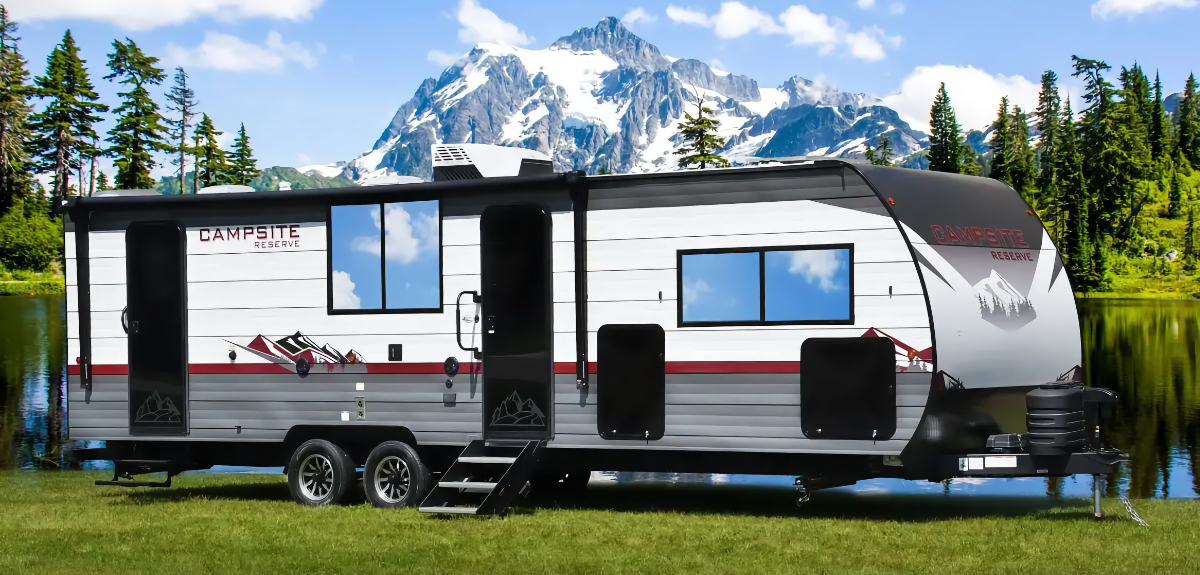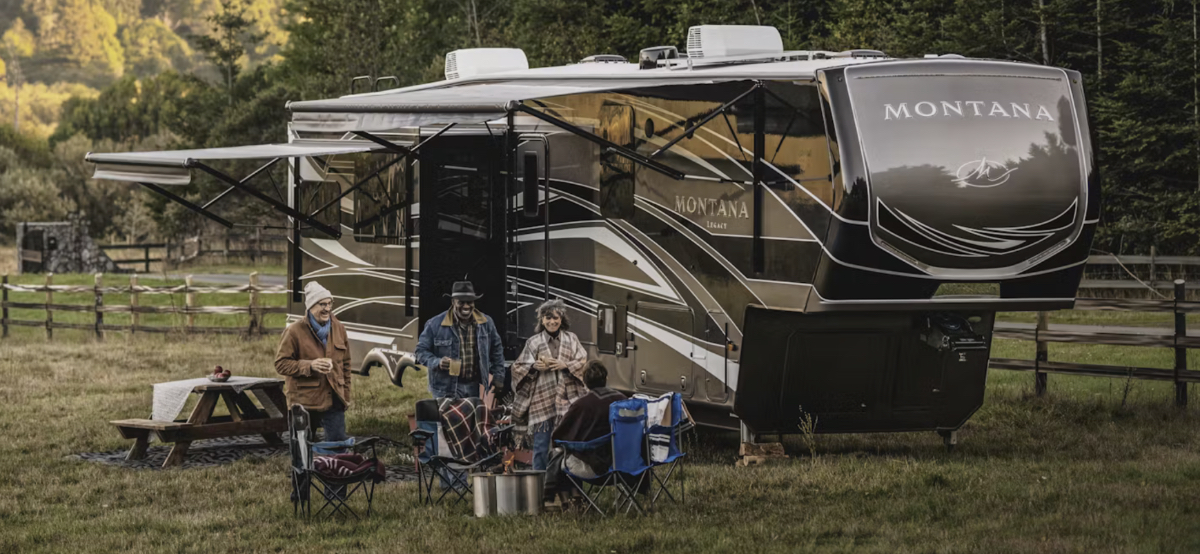The Tech We Want to See in Future RVs
The Future of Motorhomes is Smart, Efficient, and Fun
Image Caption: Image Courtesy of Voyagerix/Getty
Modern RVs are a marvel of design and engineering, from small, lightweight travel trailers to large motorhomes and fifth wheels. Many manufacturers have made an art form of fitting as many features and amenities as possible into a relatively small space. This has resulted in the most comfortable and accommodating campers ever created.
However, as good as today’s RVs are, the next generation of motorhomes promises to be even better. As the development of new RV technologies and innovative components continues—and manufacturing processes evolve—the motorhomes of the future will be safer, more energy-efficient, and better equipped for off-grid camping. They’ll also serve as a better environment for living and working while delivering enhanced options for power and communications.
What new features will make these RVs so compelling? These are the RV technologies that we would like to see in Future RVs.
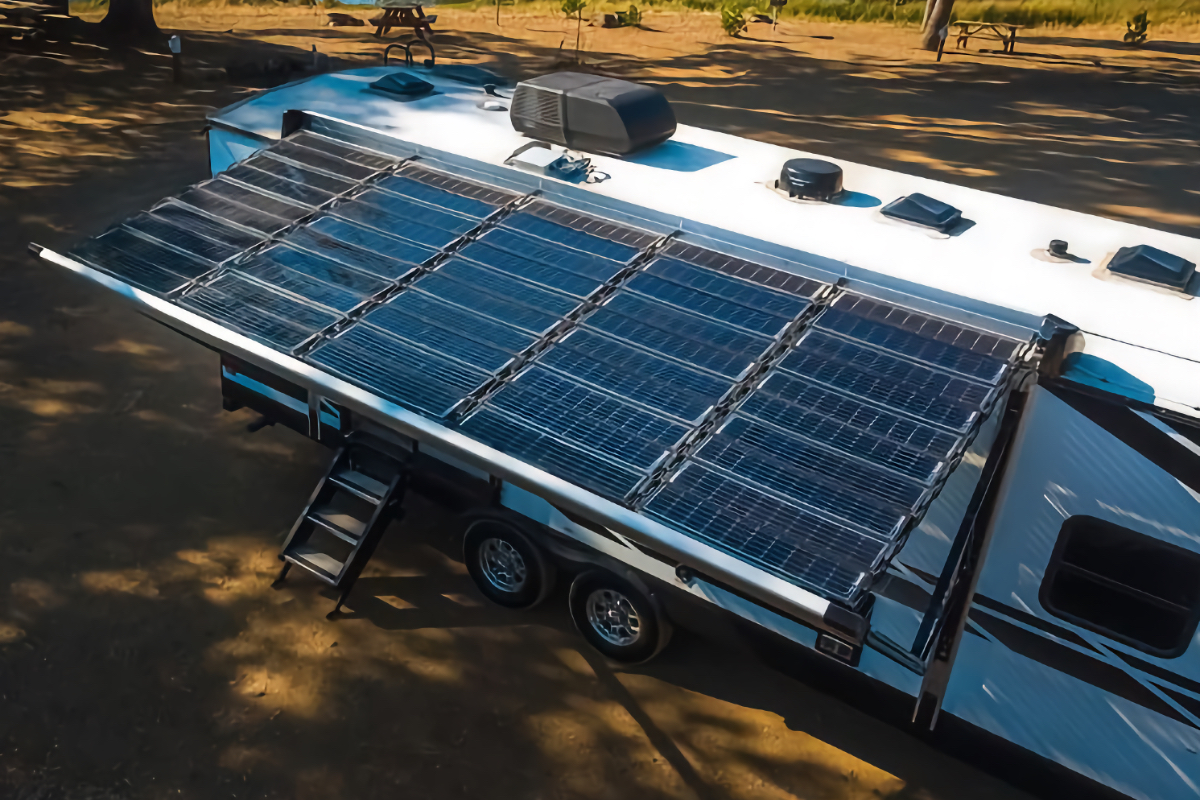
Image Courtesy of Xponent Power
Awnings Equipped with Solar Panels
Integrated solar panels have become more common on RVs in recent years, providing a clean, alternative method for powering onboard appliances and recharging electronic devices. Those panels are typically installed on the roof of a motorhome, but the development of flexible solar cells has made it possible to shift them to other locations, including a retractable awning.
An awning equipped with solar panels can generate power independently or in conjunction with a roof-mounted system. The flexible panels are integrated into the top of the awning to efficiently capture the sun’s rays. The awning is deployed at the touch of a button but also retracts quickly to protect the panels from inclement weather—something that isn’t possible with solar cells that are statically mounted.
Solar power is good for the environment and allows RVers to camp off the grid for extended periods. That alone makes us excited for new implementations of this technology, which continues to get lighter, thinner, and more efficient over time.

Image Courtesy of Black_Kira/Getty
Better Batteries
Many RVs now ship with built-in battery packs that store power for use when boondocking or in the event of a blackout. Some of those batteries also connect to solar panels that can recharge the system using energy collected from the sun. These power cells are highly useful in their current state, but future breakthroughs in battery technology should allow them to store more energy, recharge faster, and operate more efficiently.
The current RV power systems that utilize batteries use either lead-acid or lithium-ion power cells. Lead-acid batteries are much less expensive, but are also heavier, provide less capacity, have a shorter lifespan, and take longer to charge when compared to their lithium-ion counterparts. Because of this, lithium-ion batteries have slowly become the standard for most manufacturers.
As useful as the current batteries systems are, several new technologies on the horizon will soon revolutionize power cells moving forward. For example, solid-state batteries will improve the performance of lithium-ion in just about every way, providing much higher capacities and longer lifespans in smaller and lighter form factors. Adding graphene to the mix will allow recharge times to drop dramatically, too, creating truly self-sustaining off-grid power systems for future RVs.
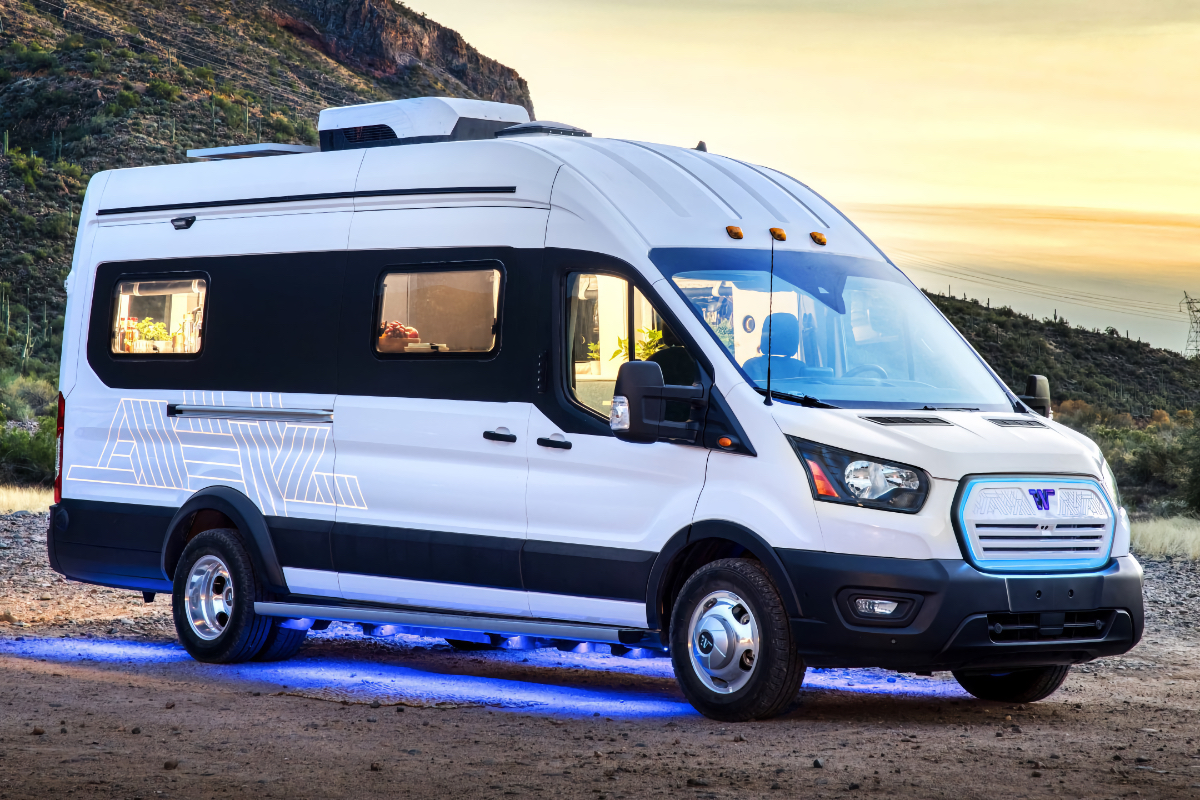
Image Courtesy of Winnebago
A Fully-Electric RV
Electric vehicles are all the rage right now, with nearly every automaker revealing plans to produce a model of some kind in the near future. Several RV manufacturers have also announced plans to create an all-electric motorhome, which holds some intriguing possibilities for the future of RV camping.
Electric motors are entirely silent, can produce plenty of power, and generate incredible amounts of torque. That makes them well suited for traveling off-road, towing other vehicles, and hauling plenty of cargo. An electric RV’s battery packs would also power its onboard systems, including stoves, microwaves, and heating and cooling units. And since EVs don’t produce any emissions, they’re good for the environment and will be much appreciated at the campsite.
The biggest challenge to making an electric RV at the moment is the size, weight, and cost of the batteries needed to power it. As mentioned above, solid-state batteries will change that, making the concept of a clean and silent motorhome a reality.

Image Courtesy of BeeBright/Getty
Fast Reliable 5G Internet
Getting a fast and reliable internet connection in an RV has often been an exercise in futility. But with 5G networks becoming more common across the country, wireless connectivity is now rivaling home connections in terms of speed and capacity. Better still, the major wireless carriers—Verizon, AT&T, and T-Mobile—are still adding bandwidth and expanding coverage, which means the service will continue to get better over time.
An RV with a built-in 5G router would be a game-changer for remote workers or travelers who like to stay connected while on the road. The router could access a fast 5G cellular network and use that connection to deliver a strong Wi-Fi signal throughout the vehicle. That service would enable content streaming on built-in smart TVs and Bluetooth audio systems or could be used to access online games and other resources.
In addition to the 5G router, a future RV could be wired with ethernet to provide a faster connection to older PCs. An external cellular antenna could be mounted on the roof to boost the wireless connection. Additionally, the option to add Starlink satellite internet service would be a welcome addition for those who camp in remote places but still want to stay connected.
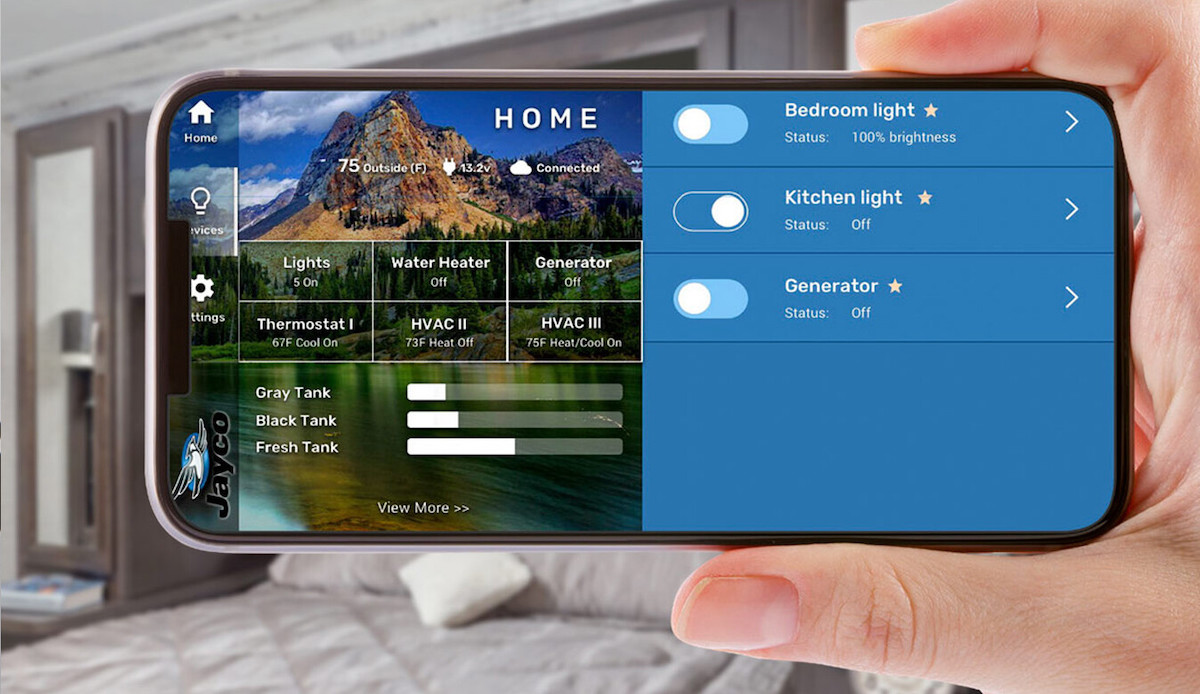
Image Courtesy of Jayco
Smart Home Features
Smart home features, including lights, door locks, and thermostats, have been popular in houses for years and should make their way into future RVs too. These handy devices can be controlled using a smartphone or programmed to activate automatically under certain preset conditions. Users can even control them by giving voice commands to Alexa and Siri.
Examples of what this technology can do include automatically unlocking doors when a trusted smartphone is detected nearby or turning lights on and off at certain times of the day. Heating and cooling systems can sense whether or not the RV is occupied and adjust the temperature settings accordingly, great for pet-owners. There are even smart blinds that can open and close based on the position of the sun.
Adding a virtual assistant—such as Alexa or Siri—to the motorhome would allow RVers to control these systems using only their voice. For example, they could ask for the lights to be turned on and set to a specific brightness. The thermostat could be adjusted by asking the assistant to set the HVAC system to a certain temperature. It is even possible to combine multiple commands into a single sequence, such as turning off the lights, lowering the blinds, and locking the door simply by telling Alexa that it’s time for bed. This level of control is fun and convenient to use, both at home and on the road.

Image Courtesy of GUARDON/Getty
NeverDump Tanks
For most RVers, the worst part of owning a camper is having to visit the dump station to empty their black or gray-water tanks. But what if you never had to do that ever again? A company called NeverDump is working on making that a reality with new tanks that clean and process their contents automatically.
For gray-water tanks, the NeverDump system cleans the wastewater using a multi-step distillation process. The water moves between chambers within the tank, bringing it to boil, purifying it over time.
The blackwater tank uses a technique called pyrolysis, which decomposes waste by first boiling the water and then baking it at extremely high temperatures. When completed, the contents of the blackwater tank gets converted into odorless charcoal that is easy to dispose of.
The NeverDump tanks are not ready for production yet, but the company does have prototypes up and running. Future RVs equipped with those tanks will be cleaner, more environmentally friendly, and have the ability to camp in remote places for longer periods.
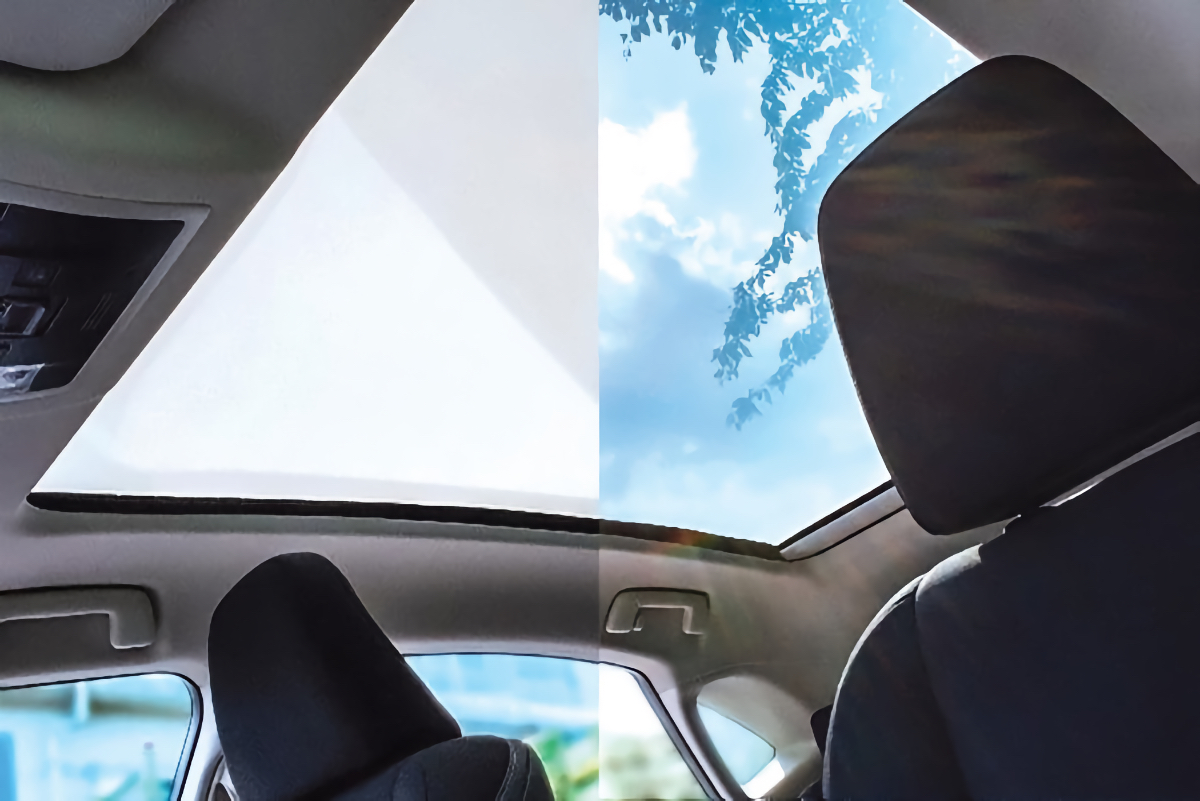
Image Courtesy of AGC
Smart Glass Sunroof
A sunroof makes an RV feel brighter and more open by allowing a lot of natural light into the cabin. But a skylight can also cause the interior to get overly bright at times and make it uncomfortably warm too. A built-in sunshade can help regulate the temperature, but can also block out the sun, casting the living space in shadows.
A sunroof that uses smart glass avoids these challenges by allowing users to adjust its opacity as needed. This type of glass has a liquid-crystal film embedded within it. When an electric current is applied to that film, it becomes completely transparent. Turn the current off, and it returns to its opaque state within seconds. And by regulating the amount of current, users can adjust the level of transparency, blocking as much or as little light as they want.
Smart glass is already in use in homes and office buildings and a few models of cars. Adding it to future RVs would give owners more versatility and control when it comes to allowing natural light into the vehicle’s interior while also regulating the temperature. Activating the glass at night would also make for excellent stargazing, but remember to turn it off if you want to sleep late the next day.
Radiant Floor Heating
Few things will wake you up faster in the morning than setting foot on a cold RV floor. But thanks to a technology called low-voltage radiant floor heating, those chilly wake-up calls can become a thing of the past, keeping future RVs warmer and more comfortable as a result.
This technology comes in the form of thin heating elements installed under a laminate floor. When activated, a radiant heating system creates a warm, cozy environment that allows campers to comfortably go barefoot, even when the temperature outside is freezing. Traveling pets will also appreciate the added warmth when curling up on the floor.
Do-it-yourselfers have been installing radiant floor heating systems in campers for some time, but future models will come from the factory with the technology already in place. This would allow the heating elements to connect directly into any built-in environmental control systems, making it easy to turn off and on and adjust settings. The warm floors even take some of the workload off the HVAC system, helping to keep the cabin more comfortable and helping you stay warm all season long.
Active Noise Cancelling Tech
Active noise canceling (ANC) technology has been a common feature in headphones for years, allowing listeners to block out external noise, making it easier to listen to their music, audiobooks, and podcasts. ANC systems generate white noise that is inaudible to the human ear but dampens background noises—such as the sound of a jet engine or a noisy coffee shop—to create a quieter listening environment.
Recently, ANC systems have found their way into luxury cars and SUVs in an effort to create a quieter driving experience. That same technology could be used inside an RV to achieve the same goal. The interior of a motorhome can get loud when traveling at highway speeds, and ANC could help make for a quieter, more relaxing drive.
Extending ANC to the rest of the RV would be useful when staying at a busy campground. Being able to block some of the sounds coming from neighboring campsites—including generators, loud music, or engine noise—would make for a more restful outing. ANC would especially be helpful when looking to get a good night’s sleep.
These are just a few RV technologies that we think would make life on the road easier, more convenient, and more fun. Hopefully, some of these features will make their way into the next generation of RVs.

Kraig Becker is a writer in the RV, outdoors, and adventure travel space. Over the course of his career he has contributed to such outlets as Popular Mechanics, Outside Online, Business Insider, TripSavvy, Digital Trends, GearJunkie, The Adventure Blog, and countless others. And avid runner and cyclist, he enjoys camping, hiking, mountain biking, kayaking, and just about any other outdoor activity. His travels have taken him to seven continents and on many amazing adventures.

